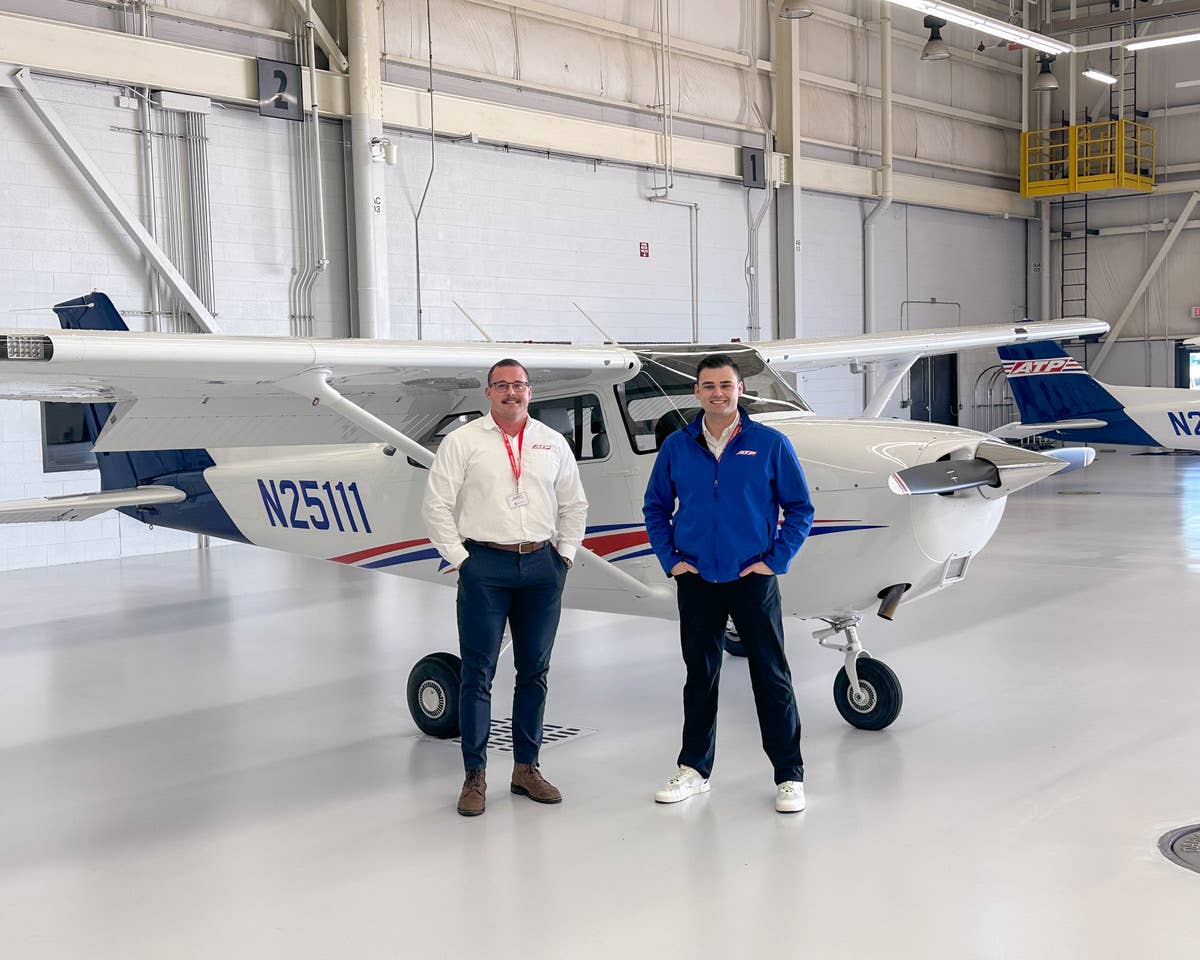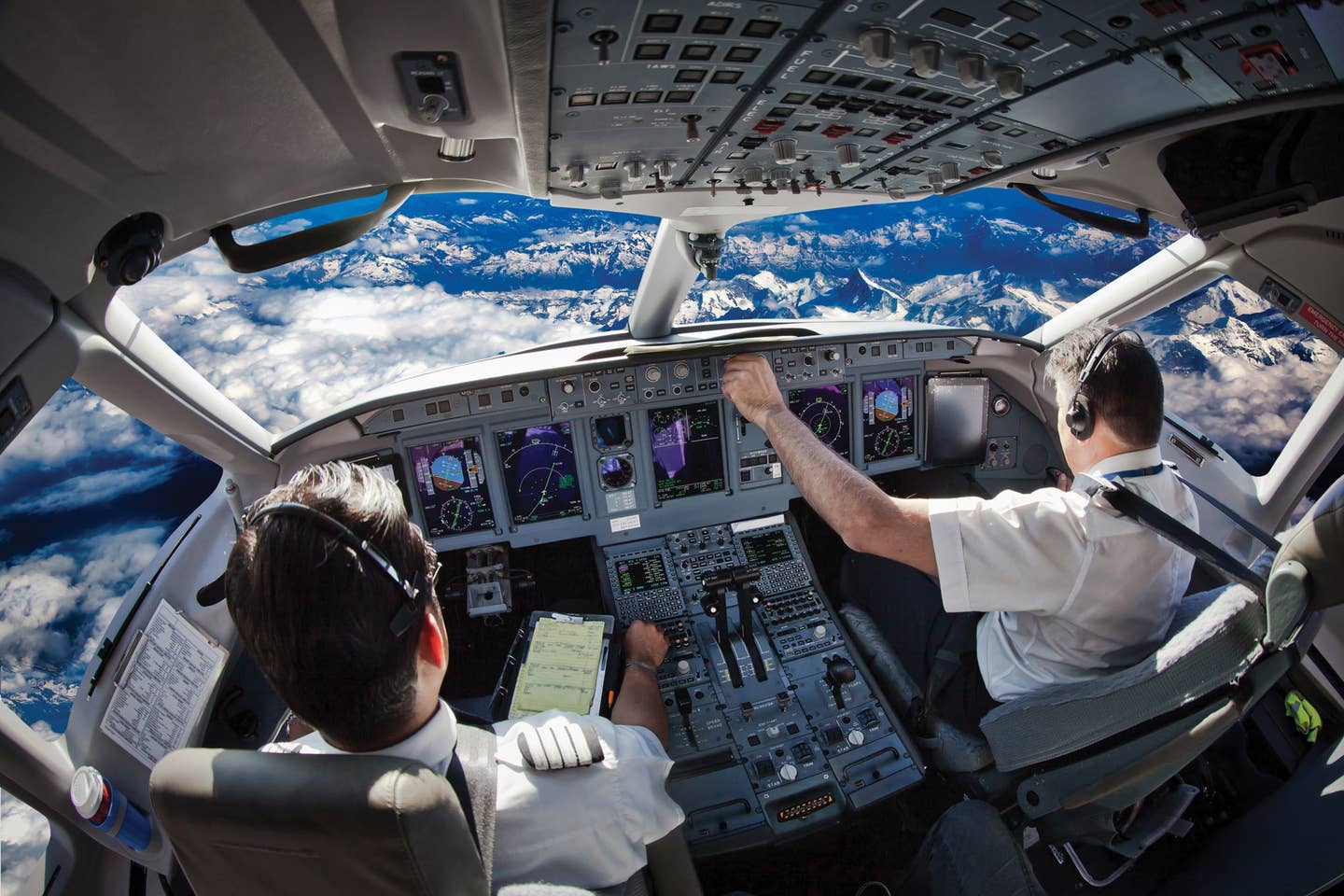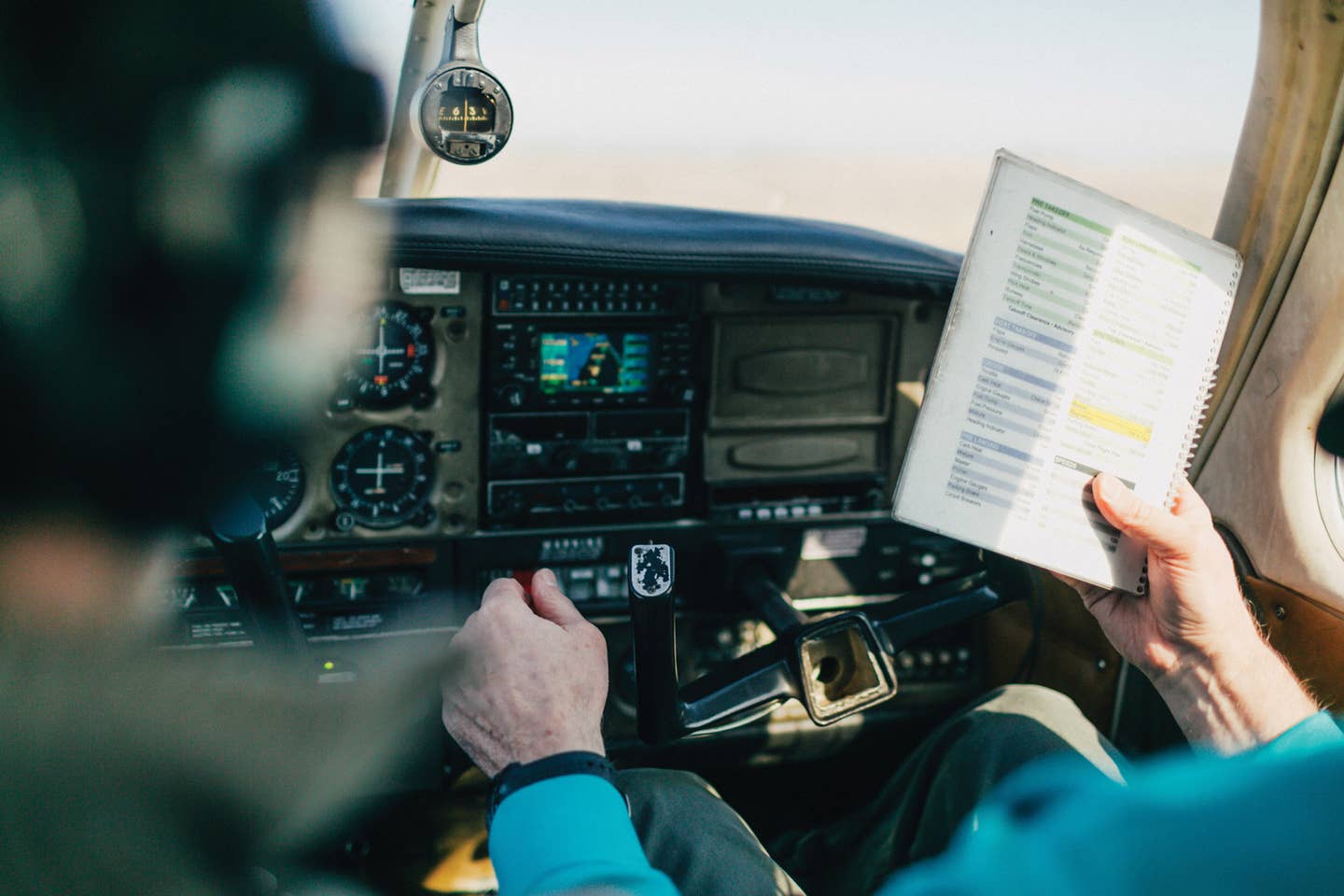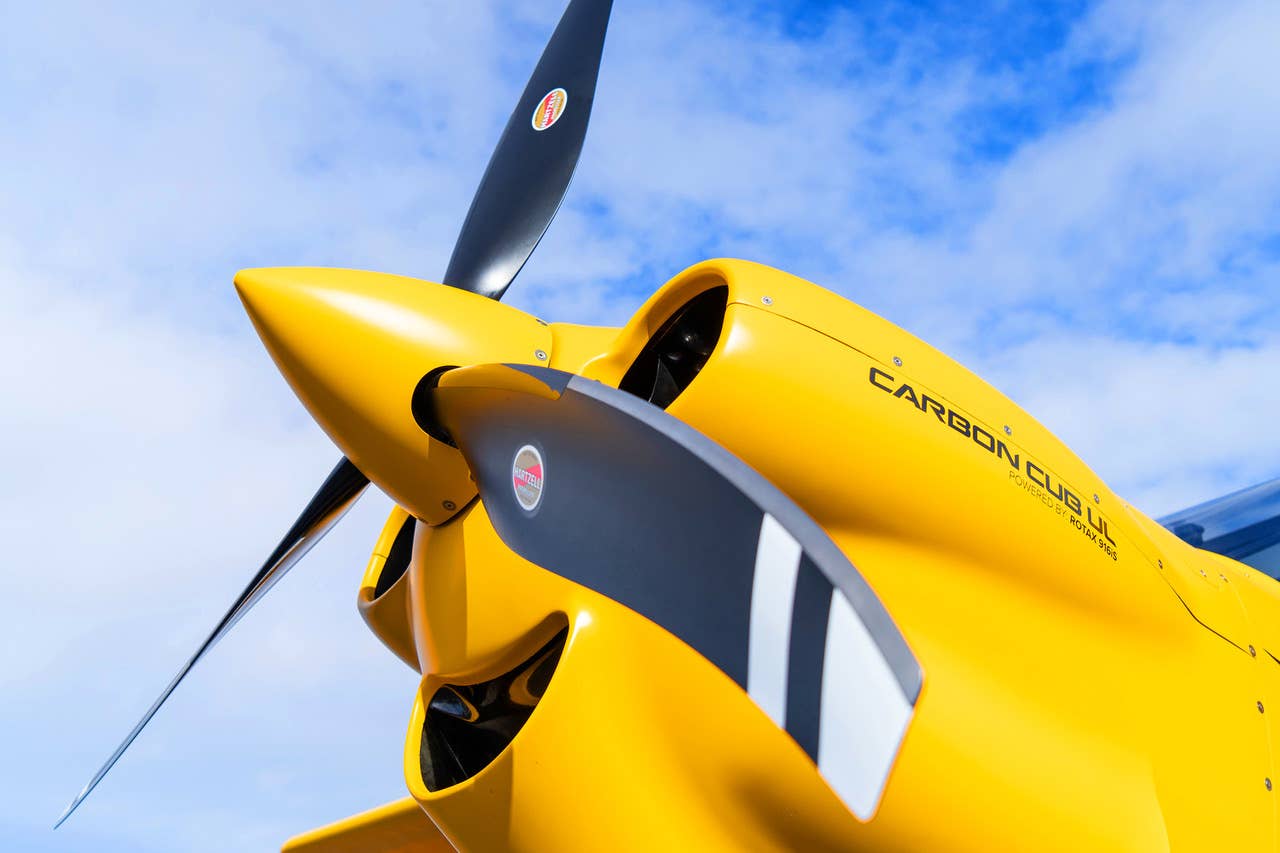Gear June 2016
PILOT POV The lightweight 360fly camera ($399.99) makes it simple to share your unique view of the world from the cockpit—you can wear it or mount it to just about…
PILOT POV
The lightweight 360fly camera ($399.99) makes it simple to share your unique view of the world from the cockpit---you can wear it or mount it to just about anything---providing an immersive 360º HD video of your flight. With WiFi, a Bluetooth interface and included 360fly app (download required), you can edit content, instantly or later, to share from a mobile device to social media. The tiny, rugged 360fly is resistant to sweat, rain, liquid, sand and dust. The camera features a built-in mic and 32 GB of internal storage, and includes a USB cable, tilt mount, lanyard and neoprene pouch. iOS 9 and later/Android 4.4 and later are supported. ⢠360fly.com ⢠sportys.com/pilotshop
GLARE KILLER
We love using our iPads in flight, but the glare from tablets can render them useless. ArmorGlas ($49.99), the only anti-glare pure-glass screen protection system for the iPad, is like having no screen protector on at all. Designed to safeguard against scratches and fingerprints, ArmorGlas is also effective at absorbing impact to minimize the chance of shattering the display. Sign up for the free ArmorGlas Advantage Program, and you get lifetime replacement of the screen protector at a very low fee, among other perks. ⢠mygoflight.com
IN THE BAG
For pilots looking to transition from a traditional flight bag to an electronic one, the airport-friendly Flight Bag PLC⢠Pro ($179) is designed to store and protect a tablet or laptop. With three compartments and side pockets, it holds two headsets, a radio and other gear, and can be used as an overnight bag. The Flight Bag PLC⢠Sport ($129) is ideal for pilots who need a smaller bag, with two compartments and side pockets, and with the same level of protection and good looks. Designed with modern lightweight sailcloth and AirCell padded shoulder and backpack straps, the bags can be custom-embroidered. â¢mygoflight.com
THE FUEL STOPS HERE
An ingenious little tool that snaps onto a standard straw fuel gauge, The Fuel Stop ($6.95) prevents it from slipping into the tank when checking available fuel. Shaped like a set of red pilot wings, The Fuel Stop lets you easily find the gauge in your pilot bag or aircraft seat pocket, and makes handling and checking fuel easier. No more gauges rolling off wings and falling to the ground, either. It can be stored separately in your pilot bag to quickly snap onto a gauge that comes with a rental aircraft or permanently installed in your personal aircraft. Works with FuelHawk or any other ½-inch-diameter fuel gauge tube. ⢠aircraftspruce.com
YOU CAN JUDGE A BOOK BY ITS COVER
In "Logbooks: Life in Aviation" ($19.95), GA icon Richard Collins shares tales from his long and storied career in aviation and magazine publishing. Divided into sixsections---Adventures, Airplanes, Safety, Technique, Weather and Flightstyles---Collins recounts his flying adventures, from landing on an aircraft carrier to flying the Concorde tocross-countrys in his P210. His tips and insights will appeal to new pilots and veteran aviators alike. Paperback edition, about 310 pages. ⢠sportys.com/pilotshop
IT'S ALL IN THE KNEES
The Universal Kneeboard Folio⢠C series (starts at $99) makes note taking and viewing data in the cockpit an easier proposition. This all-leather kneeboard/lapboard case allows your tablet to rotate 360º between portrait and landscape views, and when space is at a premium, the cover folds completely under itself. With clipboard and desktop stand options, the Folio⢠C fits all aircraft. It's available for iPad 2/3/4, iPad Air 1/2, iPad mini 1/2/3 and other tablets like the Samsung Galaxy Tab, Google Nexus and more. For the minimalist, the iPad Sport⢠series (starts at $89) is designed for helicopters, sport planes or other aircraft where space is tight. This rubberized polycarbonate kneeboard can be mounted for max utility. Available for iPad 2/3/4, iPad Air 1/2 and iPad mini 1/2/3. â¢mygoflight.com
LIGHTSPEED TANGO WIRELESS AVIATION HEADSET
We're used to wireless technology at home. Can it translate to the cockpit? We fly it and find out.
By Isabel Goyer
In what's one of the most intriguing pilot gear product introductions of the last several years, Lake Oswego, Oregon-based innovator Lightspeed Aviation is now shipping its Lightspeed Tango wireless headset ($800). You may have read a review of the headset in a major aviation magazine, one that concluded that wireless was a great idea, but that the Tango headset proved the technology wasn't there yet to support the concept in the electronically busy and spatially challenging space that is the cockpit of a small plane. I've been using Lightspeed headsets for a long time now, and I know they have set the bar high with their remarkable Zulu PFX active noise-canceling headset, so I was surprised and curious to see what the
deal was. To the airport!
I conducted the first test in a Diamond DA62, a new, diesel-powered twin that's quiet for a piston plane, but pretty darn noisy compared to most activities. I was going to be flying the new twin from Diamond (look for that story soon), so I was hoping the Tango headset wouldn't be distracting. To play it safe, I kept a spare Zulu PFX within easy reach. It was a precaution that wasn't needed, as it turned out.
The Tango isn't what you might have expected in a wireless headset. That is, it's not a product that automatically receives the signal from the audio panel by magic. Unfortunately, magic is still an emerging technology. So Lightspeed had to figure out a way to get the signal from the airplane to the headset. Bluetooth, the obvious choice, wound up to be, according to Lightspeed's Teresa De Mers, too unreliable for the job, so Lightspeed went the remarkable length of developing its own wireless protocol, which it calls Lightspeed Link, adding that it uses a combination of existing wireless technologies to get the job done.
The headset works by connecting via a small interface box that plugs into the headphone jacks in the airplane. Both the headset and the interface use rechargeable batteries, small lithium-ion units that can be replaced on the fly if a battery wears down. I would keep a charged-up spare handy. I flew with the Tango on a couple of flights, with my longest leg being just over two hours. The batteries were still working strong. If one or both of the batteries were to fail, you can hook the headset up directly to the input jacks of the airplane with a retractable cable that's built into the controller box. You lose electronic noise-canceling features without the battery, though, when you do.
In terms of comfort, the Tango, even with its battery, is light and really comfortable. It's heavier than some (though not all) competing wired ANR models (not a fair comparison, I know), but the fit is so good, it doesn't feel that way. In fact, the fit, I found, was just about perfect. The sound quality, moreover, was, according to reports from controllers I asked and my passengers, very good. I love to listen to music in flight, and the sound of the Tango is very good.
The only hiccup was a distant sound to my sidetone (the sound of your own voice over the headset) on my first foray with the Tango. I did as Lightspeed suggested and repositioned it for my second flight and didn't have the issue again. For some cockpits, it might be harder to find the sweet spot. Lightspeed offers a 30-day, money-back guarantee.
The Tango isn't for everyone. The presence of a cord isn't a big deal for me, though the lack of one, I admit, is really nice. The other issue for me is that the performance of Lightspeed's other high-end headsets, as well as those of a couple of competitors, is better than the Tango in terms of passive and active noise-canceling, and overall ease of use. Also, I'd rather not have to manage one more set of batteries.
But if you're one of those pilots who wants the cleanest cockpit you can get, the Lightspeed Tango, comfy, light and unencumbered by a cord, may just be right for you. ⢠lightspeedaviation.com

Subscribe to Our Newsletter
Get the latest Plane & Pilot Magazine stories delivered directly to your inbox






